Found Wire (2022) is vibrantly pink which is separated with darker vein-like forms which may be the fragments of the wire. The dark lines from this spread through the softer colours of the pink as though they are invading the space. There are speckles of pigment, especially within the central area of the composition, which mirrors the scattering of broken fragments and litter in the environment.
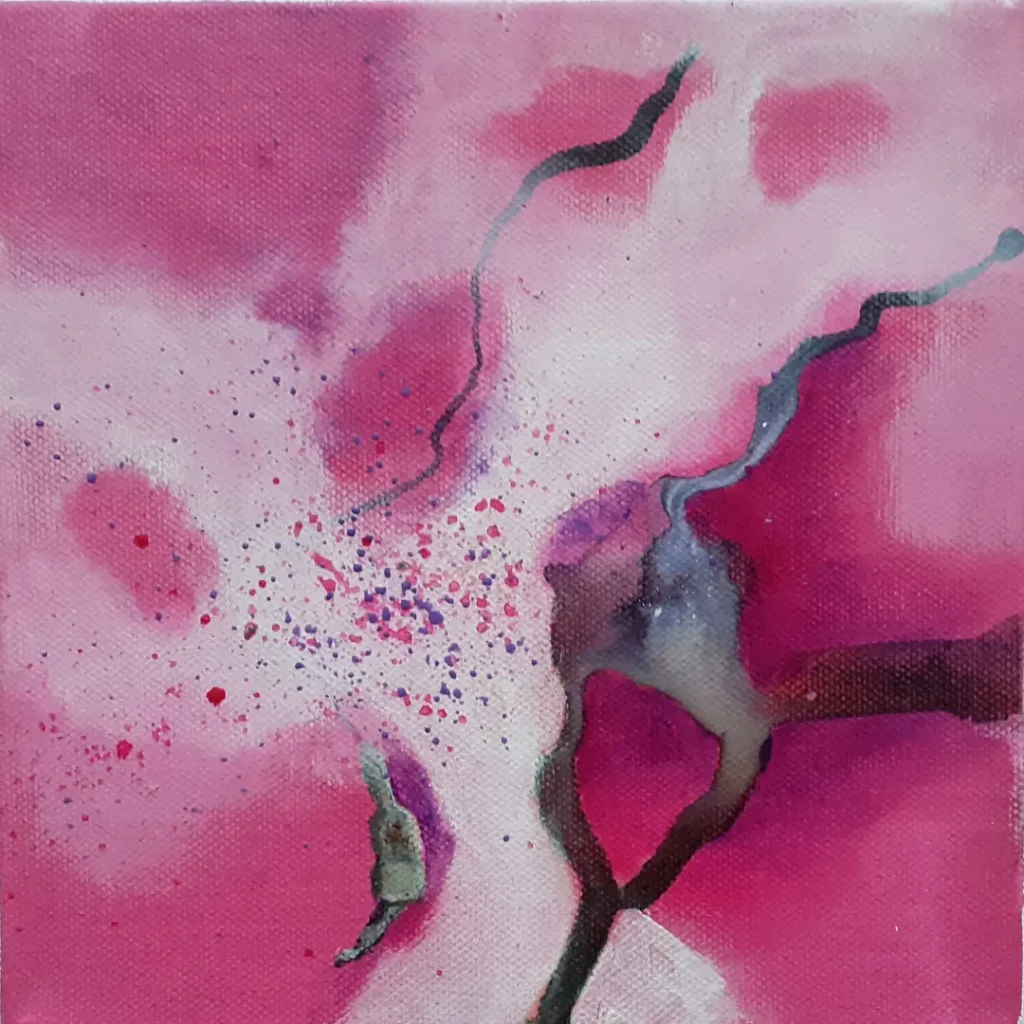
The ink seems to pulsate and flow irregularly, and it looks like it is pushing the splotches and spreading the debris across a shoreline. The debris in the work and the wire showcase humanity’s negligence and the destruction our actions have caused to coastlines. These destructive elements have invaded the natural, and as the fragments break into smaller pieces- they damage the environment much more. The work, thus, seems peaceful, but with closer inspection, the viewer has to reflect on how our actions have caused the degradation of the environment.
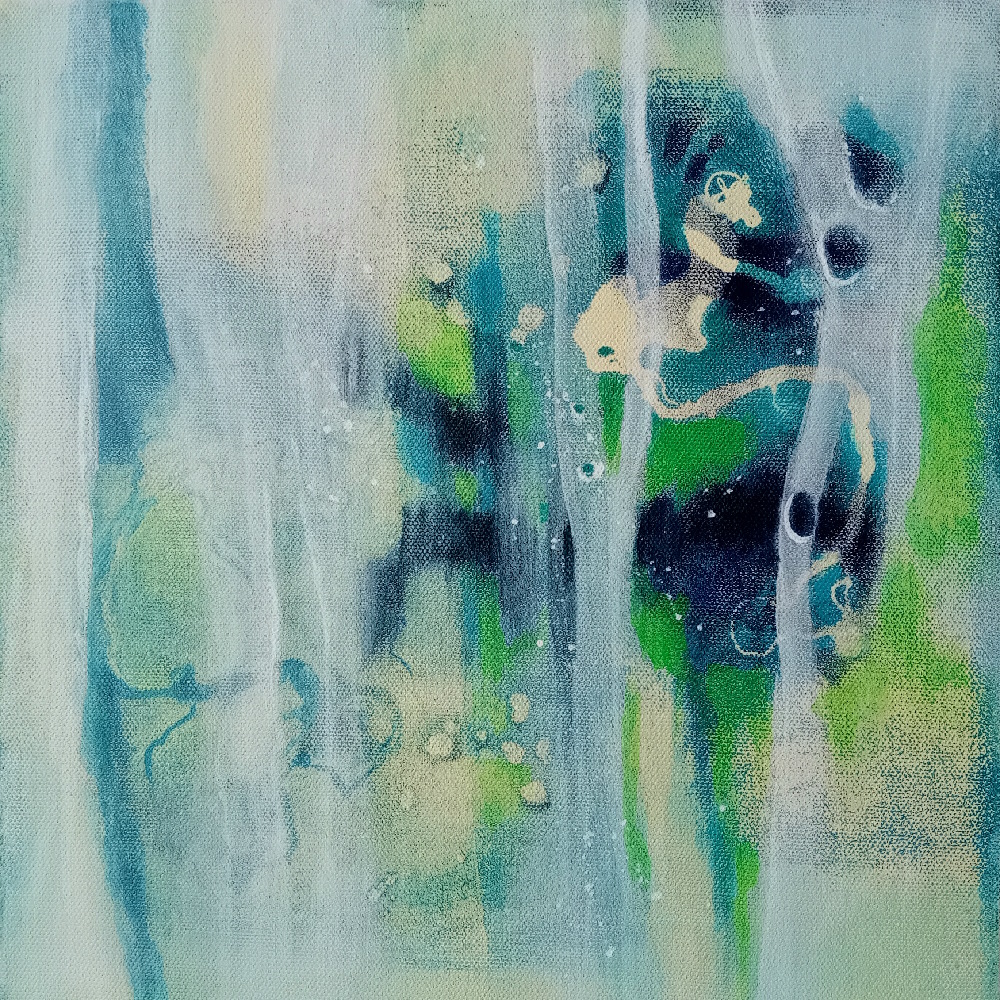
Manufactured Seahorse (Found Rope) (2024) explores the transformation of an artificial object (the rope) into an illusion of an organic creature. This brings forward the issue of human waste becoming inseparable from the natural ecosystem and marine life. Therefore showcasing how fragile these systems are. Essentially, the work reflects how our presence disrupts the natural coastal processes and landscapes.
In the artwork, you can see the white outline of the rope- which is taking the shape of a seahorse. It looks as though it is exploring the shoreline as the textures in the composition are translucent and slightly sandy, which envelop the seahorse in the water. The seahorse is an irony of an artificial material that takes the place of a seahorse and challenges the viewer. Ropes, often used for boats and other coastal and sea vehicles, thus remind them of their presence and how they have tainted the coastlines.
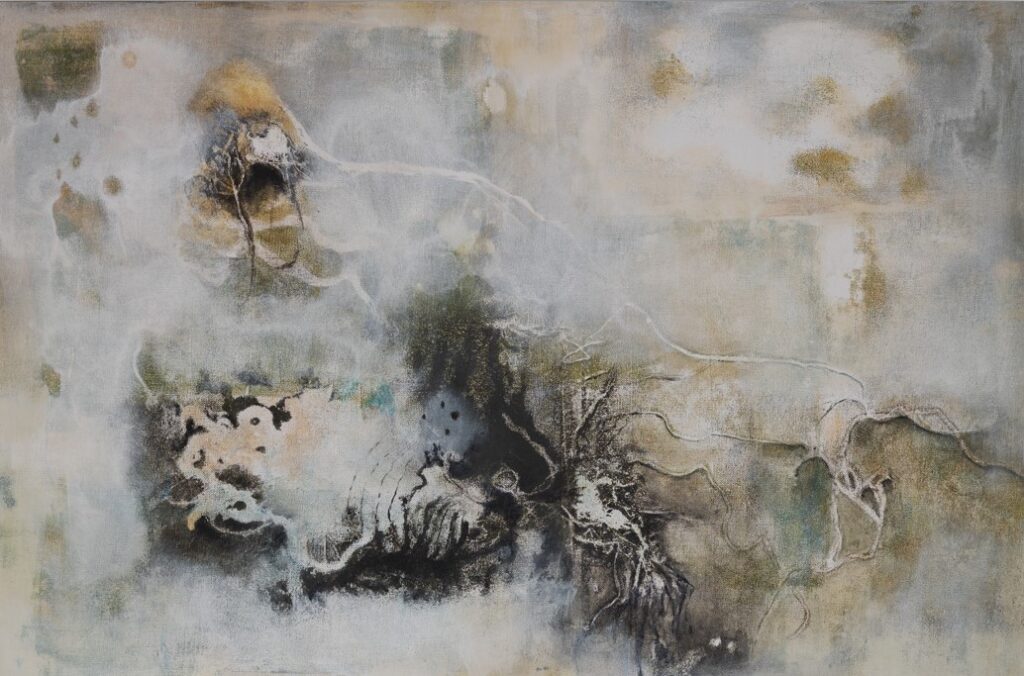
Expired (2021) is more muted than the previous two works covered. The composition feels hazy and misty, which creates a slightly liminal feel to the work. This dreading atmosphere, along with the darkness, gives more precedence to the scene as the viewer witnesses the effect of plastic on marine life. The centre of the work features the dead or dying fish emerging from the mist, which creates a fossil-like aesthetic.
The dead fish reflect the nature of human damage to the sea and coastlines as the plastic waste can infiltrate these environments and cause awful effects (and sometimes are invisible like with microplastics). The use of monoprinting plastic into a fish-form shows how these artificial materials are replacing our oceans with lifeless regions. The work’s title refers to how this damage might be irreversible as we lose or as our oceans expire.
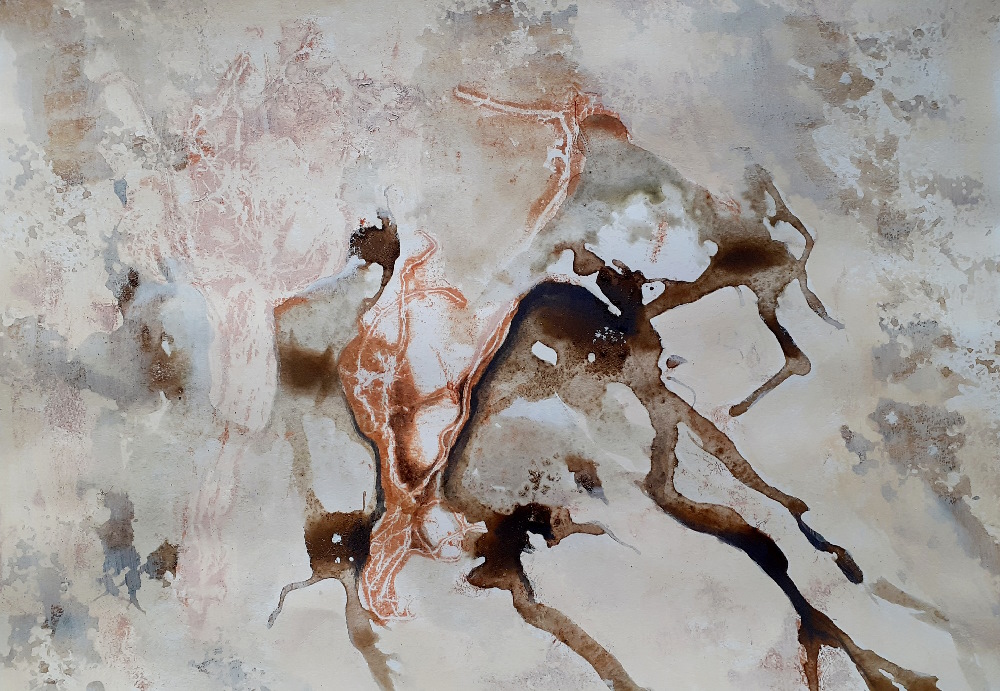
Flow (2020) is filled with brown, ochre and rusty tones against a more pale-looking background. The spewing of this darker material seems to implicate the wastewater from waterways onto our coasts and other bodies of water. The brown indicates less of the objects on the coast but more of the sewage that flows into the water that kills and infects the water. The flowing outwards of the stronger brown colour and the parasite-looking white-covered orange next to it shows how it disperses into the environment over time, mimicking the water itself and in its path- destroying coastlines and showing the trace of human activity.
Flow, therefore, brings forward the beauty of the natural world and the tension created by the destruction of human activity. The palette of the work, aided by the usage of sand in its creation, feels organic. Yet, it, confronts us with the erosion of the organic from environmental degradation, exposing our harmful impacts upon our world.
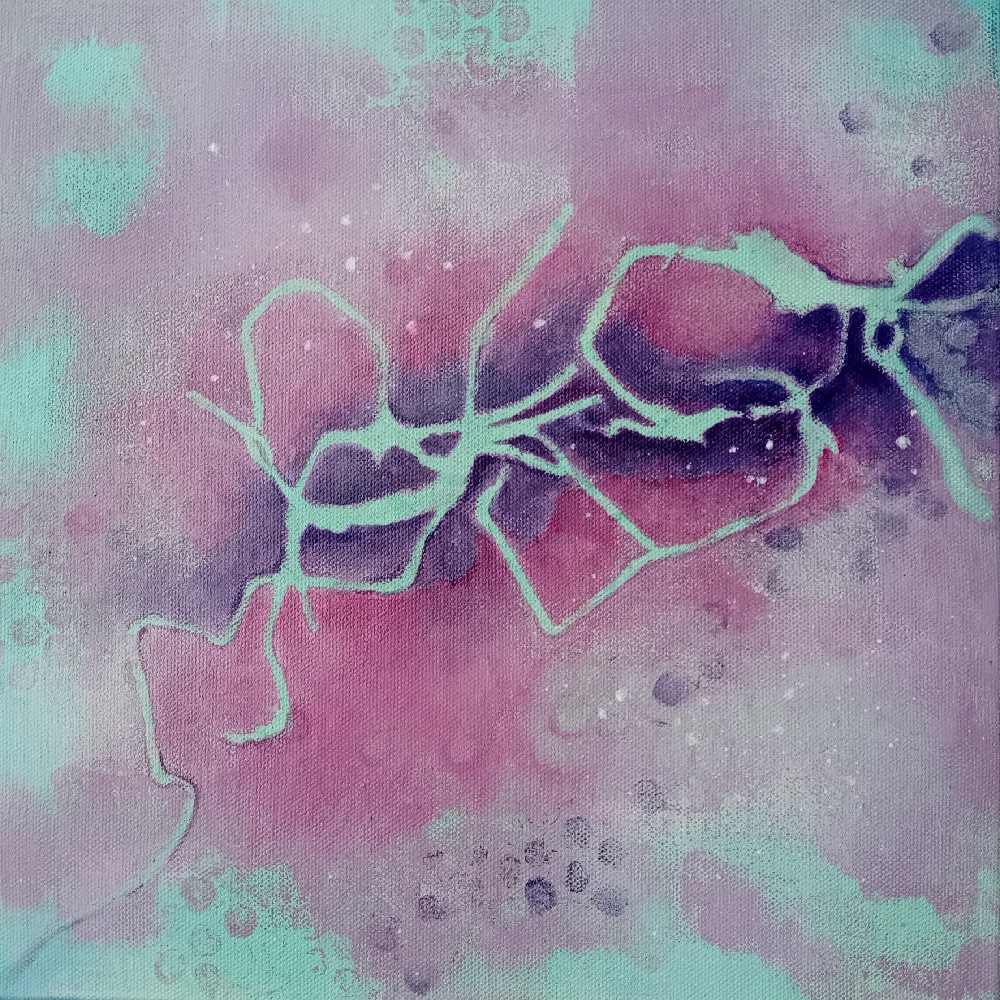
Plastic Dispersion (2024) focuses on the destructive elements of plastic on the environment. In which, the plastic strands that have been printed onto the work look like parasites, in this, it is fitting as they invade the environment and cause issues in the process. A darker colour emits itself from this parasitical structure, which permeates outwards, infects the environment, and makes it look like the plastic strands are moving along the waves of the water. Making it seem like they are parasites helps to incite the viewer to think of action and reflect on how their lifestyle may affect the environment and perhaps encourages them to reduce their plastic usage.
The work’s title brings to the viewer a sense of emergency surrounding the crisis of plastics in our water and ecosystems. The work thus explores the scale and complexity of the issue, as the dispersion of the acrylic inks makes it seem as though there is a chemical spill, in this case, plastic, into the water, changing the composition of the water and tainting it.
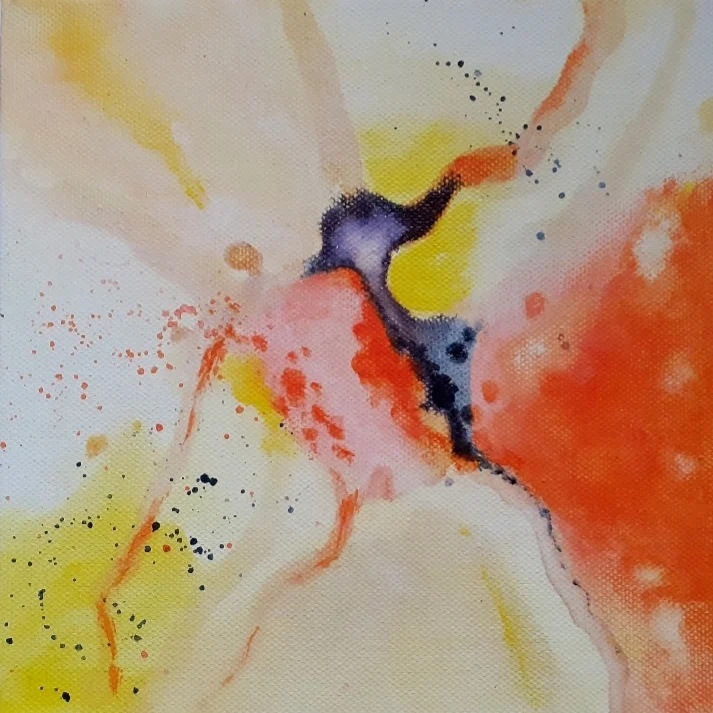
Natural or Synthetic (i) (2022) flows with the great luminous colour of mostly warm oranges, yellows and some softer pinks. These colours, however, are invaded by a darker violet and black. They all seem to dissolve into each other, creating a flow; however, the dispersion of the speckles could be synthetic plastics. The flowing of the colours and the dispersion of the speckles imply the processes of erosion and movement of plastics. The black violet structure seems organic, as though it’s alive. However, the title puts this in doubt as the viewer has been challenged to consider whether it’s natural. The ambiguity of the forms presented in the work shows the dangers of synthetic materials within the coasts and oceans as they mask themselves to look as though they are organic when they are not.
Overall, Leahy’s work documents the environmental damage that humans have caused to coastlines and the environment. How the debris has now become much more commonplace and even sometimes, in the case of Manufactured Seahorse (Found Rope) becomes illusions of marine life blurring what is natural and unnatural.
